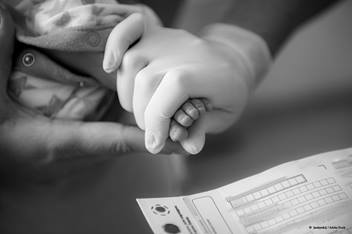Hemophilia Joint and Muscle Bleeds – PRICE Home Care

In persons with hemophilia (heem o FEEL ya), joint and muscle bleeds can happen easily, even after minor- or no-known injury (spontaneous bleeds). When bleeds happen it is important to recognize them as soon as possible to get the right treatment and limit risk of long-term damage. Below are guidelines for management of joint and muscle bleeds. Please contact your hemophilia team if you have any questions or concerns.
Signs and Symptoms
- Decreased movement of joint or muscle
- Pain
- Swelling
- Warmth or redness
- Muscle guarding or muscle spasm
- Decreased weight bearing and use of affected joint or muscle
- Tingling, bubbling feeling

Treatment
First, follow your Hemophilia team’s recommendations for factor or DDAVP when you suspect a joint or muscle bleed. Also document the bleed on your calendar. Then you can follow the steps below to manage the bleed through the PRICE treatment strategies. PRICE stands for Protection, Rest, Ice, Compression and Elevation.
- Protect the affected limb.This may include limited weight bearing, use of a splint or brace to provide protection for the area during the healing process, or both.
- Rest the affected limb.If it is a leg joint, this will mean limiting weight bearing and possible use of assistive devices like crutches or a walker.Avoid high-impact activities like running and jumping.
- Ice can be used for 10 to 20 minutes, every 1 to 2 hours for the first 24 to 48 hours.You can use an ice pack, cold pack, ice cup or controlled compression unit.Always have a barrier (like a washcloth) between your skin and the ice (other than ice cup) to prevent an ice burn.For safety reasons do not use ice on an area without normal sensation.
- Compression limits the amount of bleeding.Compression can be applied to the area by use of an elastic bandage (ACE wrap) to wrap the injured joint.You should wrap the joint from the lowest point to the highest point with gentle tension.Be careful when re-wrapping the ace wrap to ROLL it on, not stretch and roll.The ace wrap is too tight if your foot or ankle feels numb, tingly or cold.You should wear the wrap during waking hours.You can remove the wrap to bathe.Continue using the wrap until swelling has gone down or joint is back to its usual size.
- Elevate (raise) the injured area to a position higher than your heart.Elevation can help to slow the bleeding as it decreases pressure on the blood vessels.Elevate the area often for the next 2 to 3 days while resting or follow recommendations from your medical provider.
Why It Is Important to Treat Joint and Muscle Bleeds
If these bleeds are not treated they could lead to one or more of the following:
- Loss of movement (contracture)
- Joint arthritis
- Arthropathy (arth ROP a thee)
- Chronic pain
- Trouble with daily activities and mobility
- Muscle weakness
When to Call the Doctor
Please contact your Hemophilia Treatment Center (HTC) or physical therapist if you have questions or concerns about how to take care of a joint bleed.
HH-I-433 08/19 | Copyright 2019, Nationwide Children’s Hospital



